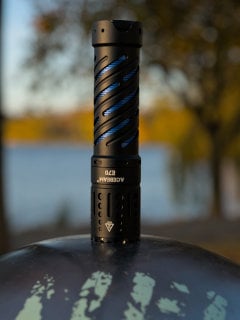

repair leaking pool equipment
You have a pool. You are already head and shoulders above most people, including people who are also mortgaging a property.
Progenitor of the Weird Knife Wednesday feature column. Is “column” the right word? Anyway, apparently I also coined the Very Specific Object nomenclature now sporadically used in the 3D printing community. Yeah, that was me. This must be how Cory Doctorow feels all the time these days.


repair leaking pool equipment
You have a pool. You are already head and shoulders above most people, including people who are also mortgaging a property.


Racket.
A racquet is what you hit your insurance adjuster with when you’re tired of his racket.


Why would I or anyone else give a flying fuck what Home Depot paid for the lumber they’re selling me? I can’t buy it at their price; I have to buy it at whatever retail price they (or Lowes, or Ace, or TrueValue, or 84, or whoever…) have set.
If the wholesale price of lumber – which is not accessible to normal people – has fallen but the retail price is still high, all that means is that these retailers are price gouging which is exactly what the original commenter was talking about.


The first gen 3 series machines definitely had some teething troubles, so waiting on the 4 is probably a wise plan.
Me, I’m mostly interested to see if they backport compatibility for their “Qidi Box” filament changer thingy (which thus far is vaporware in the first place) to also work with the Plus/Max 3. I don’t care about multicolor printing that much so I’m not about to buy a new printer just for it, but if I can slap on an add-on I just might.


Even if these are overblown, I personally refuse to tolerate setting the precedent that this kind of thing is ever okay, and once a company tries it they’re burned forever as far as I’m concerned. No one needs to be spying on me, for any reason, ever, and I will never do business with anyone who did it even if it was in the past. Trying to force people to use a cloud account just to get functionality of the piece of hardware they already paid for with no technical reason behind it whatsoever is ludicrous. My printer can do everything a Bambu can do without the need to connect to a third party’s severs. If Bambu’s cloud servers are ever disabled, compromised, or simply shut down then your printer suddenly winds up somewhere on the spectrum between having functionality crippled or simply becoming useless. That’s a stupid risk.
Bambu Studio’s extremely fishy behavior has been very well documented, and I don’t think it’s work the risk doing business with its company for any reason when so many viable alternatives exist.


Maybe the UltraFire SK68, although it’s a little chonky for a single AA light. Their SP10 is also single mode and is a AAA light, so it’s quite small. Not terribly powerful, but given how many people have been satisfied with a dinky old Maglite Solitaire and its christmas tree light bulb, it may be plenty for your purposes anyway.
You’re right that it is actually remarkably difficult to find a modern single-AA-ish sized EDC light that hasn’t got multiple modes. It’s easy if you want to get one of those piece of shit 3xAAA “zoomies,” but they’re… well, pieces of shit.
I’m interested to see what other flashlight nerds can come up with that I haven’t thought of.


Qidi does not have a proprietary slicer that phones home, and they have not been demonstrated to engage in any suspicious behavior.
My issue with Bambu isn’t that they’re Chinese. My issue is how they conduct themselves.


And notwithtanding that the damn stuff is around $78 for a kilo of filament! My other guess was polyethylene (HDPE). These two are pretty similar mechanically, both being polyolefins, but polypropylene melts at a higher temperature.


They’re slimy. Their machines use proprietary software and parts, and their software has a highly questionable always-online requirement that phones home back to their servers, which is something that really ought not to be happening with anything that may be able to identify what objects people are 3D printing. Even if they’ve walked back the always-online thing and allowed local only operation on some of their printers, that still demonstrates that they are not to be trusted. There’s nothing to say that they can’t prevent your slicer from slicing some object the CCP has deemed should not be printed, or remotely brick your printer, or just simply refuse to allow their slicer software to connect to it anymore.
Their company was founded by former DJI employees. That should really say it all.


Qidi X-Plus 3. If it’s anything like my Max 3, which is the bigger version, it ought to be plug in and use (after running the included calibration). It’s on “sale” right now for $500, but it’s always on sale. It’s also not made by Bambu, and if I were you or anyone else I would not give one rusty penny to Bambu for anything.
The draw with this thing is it comes with a fully enclosed chamber with a heater and PID to control it, and it’s the easiest time I’ve ever had printing ABS and PETG if that’s what you want to do. You can slap a 0.2mm nozzle on it easily enough if you want to print tiny stuff.
If you don’t care about high temperature materials you can get the X-Smart 3 which is based on the same system but is smaller and minus the heater, and is even cheaper.


Well, if we’re ruling out PET and PETG – PET would probably require the temperatures you describe and would be impervious to acetone, as well as extremely flexible – there is an outside possibility it could be HDPE.
HDPE filament is damn rare, though, and I’d doubt anyone would be giving it away as samples given how difficult it’d be to print with most consumer machines. HDPE’s signature tell is that it feels somewhat waxy if you e.g. scrape at it with your fingernail.


The other point here is that if the lenses a user gets don’t quite match the frame you could always just tweak and reprint the frame a bit to match the lenses. That’s not really the end of the world, but I don’t count on any opticians to understand that. The concept of a user being able to so easily self manufacture a set of frames is probably completely alien to them.


Relatedly, I go to great lengths to eliminate this effect in the types of photos I take. The fact that your camera has a limited depth of field becomes more and more relevant the closer to your subject you are.
This can be reduced somewhat by narrowing your camera’s aperture. All other things being equal, you wind up with a wider (or perhaps rather, deeper) depth of field the narrower your camera’s aperture is. This also lets in less light so you have to increase your exposure time to compensate. This is fortunately not a problem for subjects that have the decency to hold still.
Depth of field limitations are usually not an issue for people taking wide shots of large things that are far away. Not always, though. The classic example is someone taking a landscape photo of the Alps or something, and dutifully following the “one third rule.” The mountains, the sky, and the meadow in the foreground may well be perfectly taking up their geometrically precise aesthetic portions of the frame, but the problem is that the daisies sticking up in the foreground six feet away from the camera can be in focus, or the mountains on the horizon, or some middle point in the grass in between the two – but not all three at once.
I was going to say that these days smart photographers can solve this by taking multiple photos with different focal points and composite them together with at technique known as focus stacking. But dumb photographers can do it, too, because that’s also exactly how I solve my problem of my camera having an effective depth of field of about 2cm no matter how hard I try otherwise, at the distances I’m typically working with.
Conflabbit, I just installed RC4 on my machine the day before yesterday. Is RC4 any different than the “final” 1.0?
Also: The main downloads page on freecad.org is still serving 0.21.2…


Ditching the PETG would probably go a long way. Try it in ABS or even PLA and you’ll have better shape definition and a whole lot less stringing.
Rather than reproducing the pattern in the original wholesale, you could also consider stealing the idea from e.g. this, which has a “mesh” outer wall that’s a continuous loop and thus doesn’t require a zillion retractions every time there’s a gap.


I hope you meant PLA. Printing in PVC is a hilariously bad idea unless you do it inside a lab grade fume extractor or something. There’s a reason barely anyone makes PVC filament.
PVC releases chlorine when heated which is not only incredibly harmful for you, but will also oxidize with and corrode all the metal parts in your printer and probably eventually embrittle its plastic parts as well. This is also why you should not make bongs out of PVC.


The problem there is the government already has most of the guns and are very, very willing to use them.
Data is indeed read from the inner ring outwards, as anyone with a CD burner in the late '90’s and 2000’s is very familiar with.
For audio and video playback, the disk is spun faster at the beginning and progressively more slowly towards the outer edge, a process known as Constant Angular Velocity playback, because more linear distance is covered at the same RPM the larger your circle gets, i.e. the closer you are to the edge. This is no problem for audio playback at “1x” speed because this tops out at a paltry 500 RPM or so.
For data reads, however, most drives use Constant Linear Velocity and spin the disk at the same speed all the time. That means your data throughput is higher at the edges of the disk. The prevalence of 2x, 4x, 16x, 24x, 40x, 52x, etc. PC CD (and DVD, etc.) also means that those drives will spin a disk way faster than a regular CD player will which can definitely cause a problem with irregularly shaped disks like the one in OP’ photo. They would also inevitably only achieve their rated whatever-x speed when reading at the very edge of a full disk. (You mean the marketing department was deliberately misleading??? Say it ain’t so!)
Those little business card disks were nonstandard but would work in most tray loading drives, and held a whopping 30 megs.
The 80mm minis were envisioned as “CD Singles,” and they actually were defined as part of the official CD standard. Therefore most CD players and drives including slot loaders actually were and are designed to work with them without incident. Typical tray loaders have a smaller indent below the main one to accept the smaller disks, and pretty much all horizontally oriented slot loaders will take them as well.
Yeah, well, they promised Windows 10 would be the “last Windows,” too. We know how their track record goes on that.
I’ve had a very successful lifelong policy of never giving Microsoft any money for anything ever since I was knee high to a grasshopper gnawing on the keyboard of my first 286, and it’s served me pretty damn well so far.